What is Energy?
- Energy is measured in joules and is the ability for a body to do work.
- Energy can be stored in a variety of forms, such as heat, or chemicals.
- Energy is never created or destroyed, but it is only converted to other forms of energy.
- There is however a term called "energy degradation", which refers to when energy is converted into less-usable forms. Such as when useful chemical energy is converted into less useful thermal energy, or heat.
Types of Energy
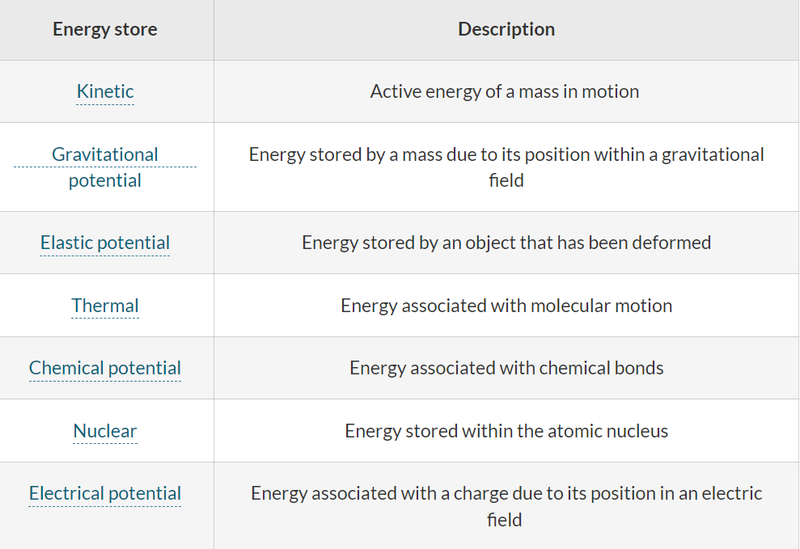
What is Work?
- In physics, work is defined as the process of changing the form of energy.
- For example, if you were to lift a dumbbell, you'd be using the chemical energy stored in your body in order to give the dumbbell potential energy.
- A force is said to do work when it acts on an object, and it transfers energy to it.
- The work done by a force can be calculated by multiplying the displacement of the object upon which the force acts and the component of the force that is parallel to the object’s displacement.
- As any change in energy counts as work done, there are many different ways to calculate work.
- However, this formula can be useful for calculating changes in work through changes in kinetic and potential energy, for example.

- Note the inclusion of cosθ, where θ is the angle between the force and the displacement in this formula.
- If the angle is 0, then cosθ = 1, and the force is the highest possible.
- The more the angle increases, the smaller force gets.
- If you're applying a force at 90°, then cosθ = 0 and no work is done!
- Work can also be calculated through force-displacement graphs.
- As work is Fscosθ, work is the integral of (Fcosθ)/s.
- And likewise (Fcosθ)/s is the derivative of work.
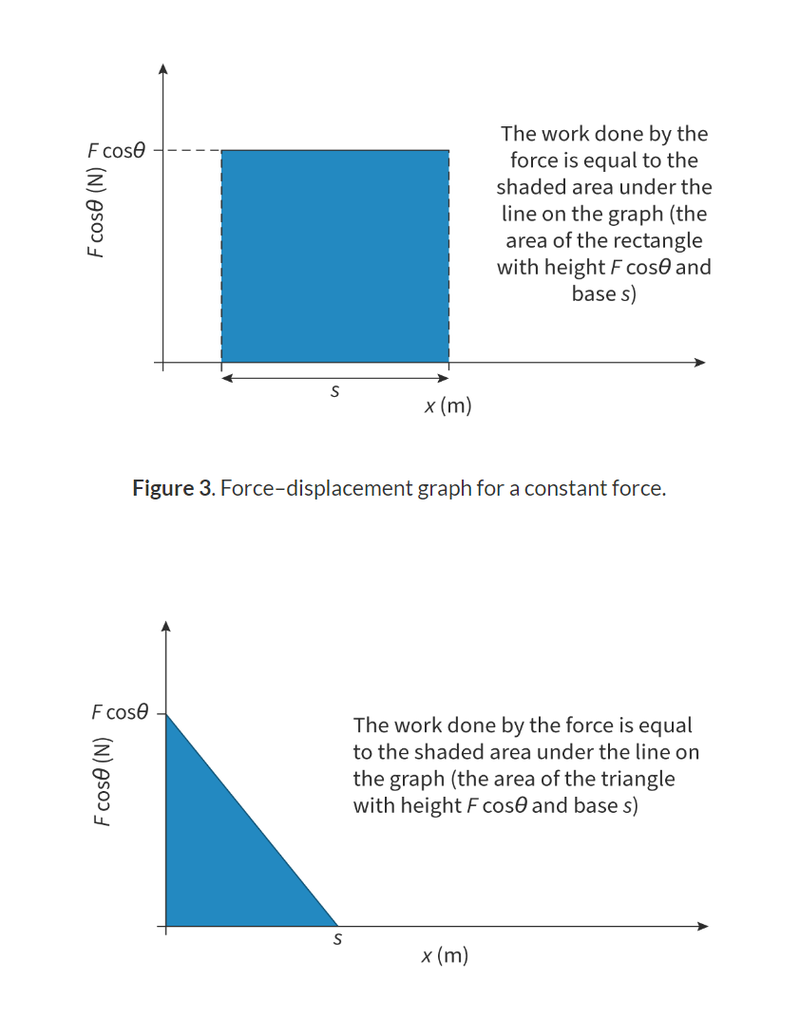
Kinetic Energy
- The equation for kinetic energy, which is the energy of a moving object, is shown below.
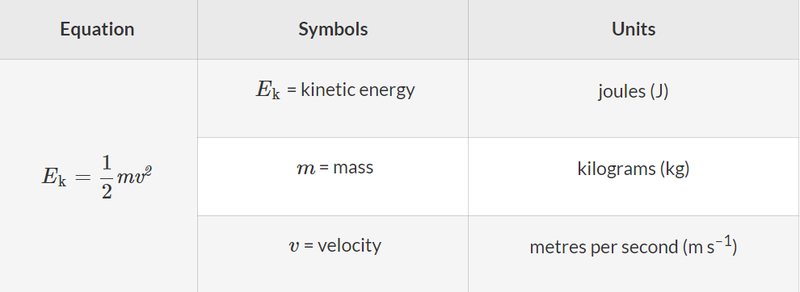
- At constant velocity, energy is proportional to mass.
- This would mean that doubling the mass would double the energy.
- However, as velocity is squared, any change in velocity would have an exponential effect on the kinetic energy.
- If mass is constant, then work done is:
W = ΔEₖ = 1/2 * mΔv²
Gravitational Potential Energy
- At heights, objects have gravitational potential energy.
- Gravitational potential energy is the potential for gravity to do work on a body.
- For example if you drop a rock then all its gravitational potential energy is converted into kinetic energy as gravity does work on it as the rock falls.
- Some of the energy will also be converted into heat and sound.
- The equation for gravitational potential energy is shown below.
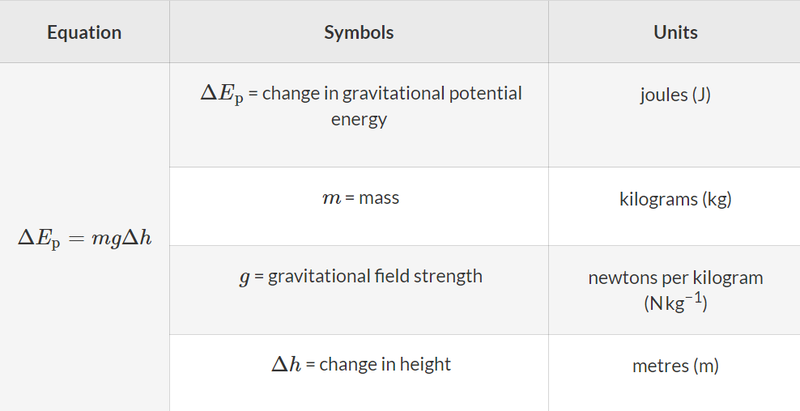
- From this equation we can see that gravitational potential energy is primarily based on height.
- A heavier mass and a stronger gravitational pull also lead to a greater potential energy.
- This equation is derived from the basic formula for work ,Fscosθ, where Fcosθ = mg (as gravity is parallel to height) and s = h.
- If mass and the gravitational acceleration of free fall are constant, then:
W = ΔEₚ = mgΔh
Transfer Between Gravitational Potential Energy and Kinetic Energy
- Imagine a roller coaster cart that starts off with a net amount of energy given to it when it is tugged to the top.
- Now all of its energy is gravitational potential energy.
- However, as it starts going down the slope, its kinetic energy increases and its gravitational potential energy is decreasing.
- As the cart ascends a slope, it slows down, and its kinetic energy decreases as its transferred into gravitational potential energy.
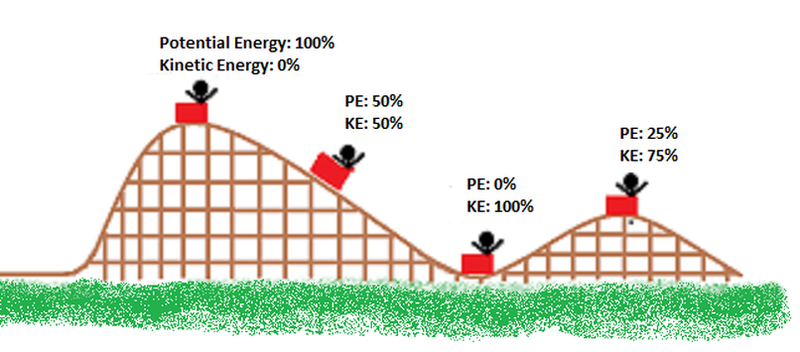
- Although theoretically this could go on forever, the roller coaster will eventually slow down and stop as parts of its energy are dissipated as heat and sound.
Elastic Potential Energy
- Work can also be stored as elastic potential energy in a spring (or another elastic object such as a rubber band).
- When a force is applied to stretch or squash a spring, work is done.
- The amount of work done is equal to the elastic potential energy stored in the spring.
- Letting go of the spring transfers its elastic potential energy into kinetic energy (and thermal energy and a little sound).
- The equation for elastic potential energy is:
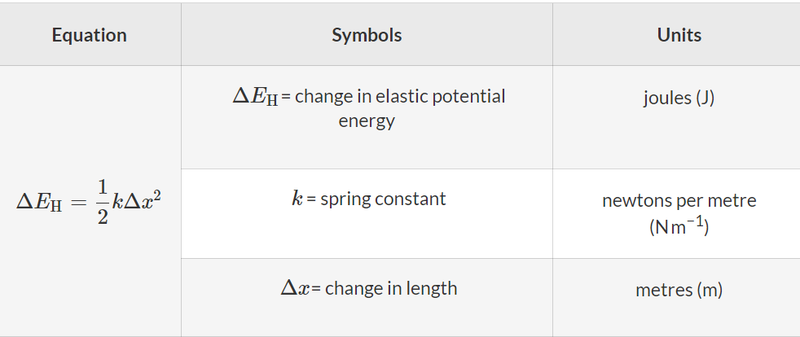
- This is where springs get the energy to apply the elastic restoring force which does work.
- Elastic potential energy can also be calculated as the area underneath a force-extension graph.
- If the spring doesn't get deformed and follows Hooke's law, then the area underneath the graph is a triangle whose area can be easily calculated.
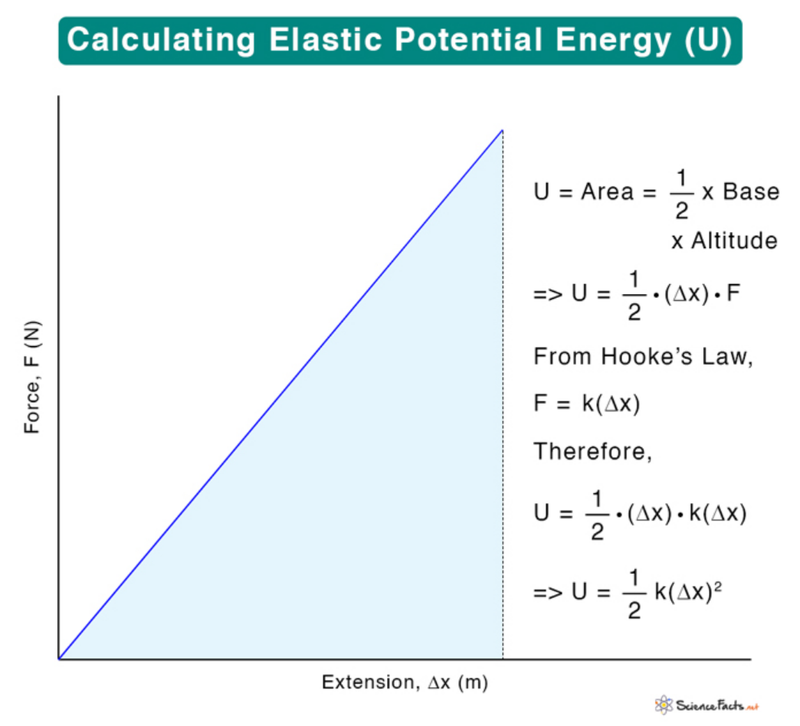
Sources
https://sciencesorcery.weebly.com/potential-and-kinetic-energy.html